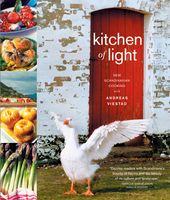🍝 Enjoy the cooking of Italy and save 25% on ckbk Membership 🇮🇹
How We Survived
Cod and Potatoes
Published 2003

The waters off the coast of western and northern Norway, where icy Arctic currents meet the warmer Gulf Stream, make an ideal breeding ground for cod. For centuries cod was one of the few commodities we had to offer the rest of the world. Cod, mackerel, herring, and animal hides were traded for wine, spices, books, and other luxuries that could make life in the high north more agreeable. This commerce linked Norway to the rest of Europe, culturally and economically, and gradually the modest trading posts along the coast grew into affluent cities like Bergen, Kristiansund, and Ålesund. Between the sixteenth and nineteenth centuries, more than 60 percent of all the fish consumed in Europe was cod, a good portion coming from Norway.
Get instant online access via ckbk
Access this title via ckbk for one-off payment of the eBook price
ckbk includes hundreds of the world's best cookbooks
150,000+ recipes, with thousands more added each month
Powerful search filters to match your tastes
Create collections and add reviews or private notes to any recipe
Swipe to browse each cookbook from cover-to-cover
This à la carte title is available to ckbk members for a one-off payment of
In this section
Advertisement
Advertisement


